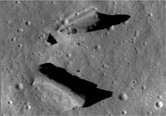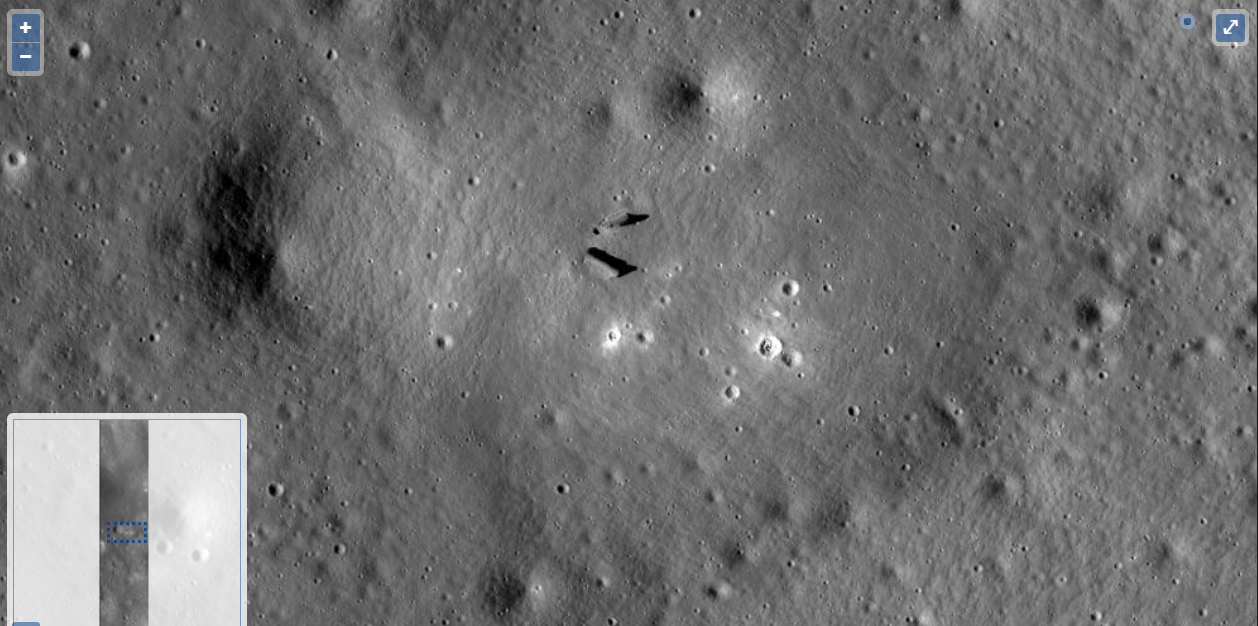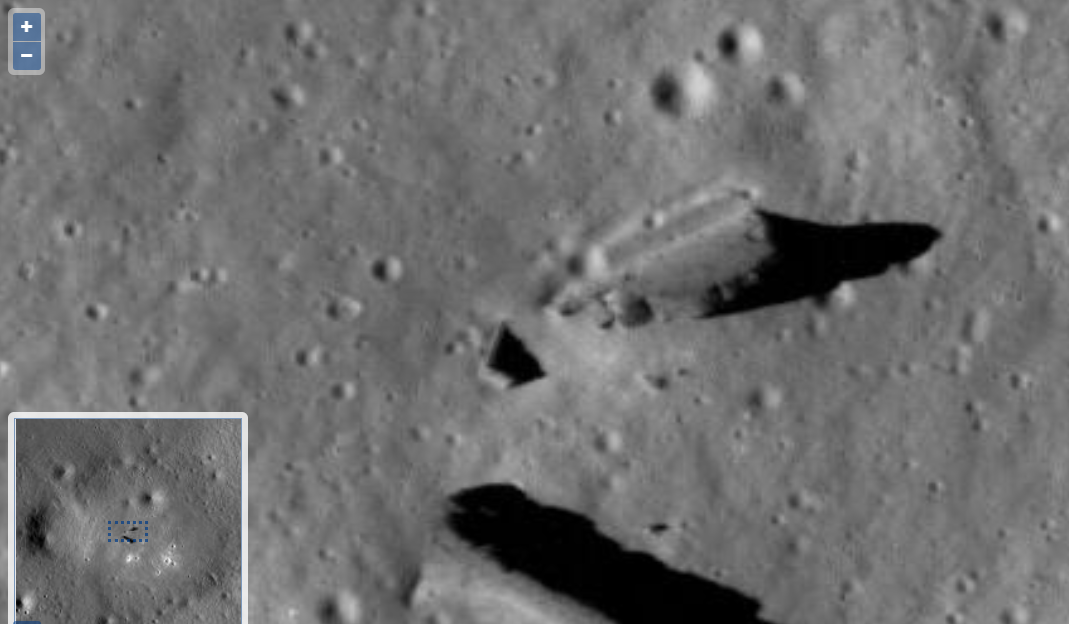
Cropped image from LRO image M118769870L
| Fran Ridge: Our team member, Ananda Sirisena had sent me some lower resolution Apollo images that looked like "towers" because of the shadows, but it was the LRO image that made me sit up and take notice. And later we found additional images from different angles and dates. But within a few months our other colleague, Mark Carlotto had created some nifty graphics and we produced our report that went out to everybody, including all our NASA contacts. And NASA people who had admired our previous work and my proposal (RIPTILA) that later would have been a great idea for Gateway, simply dropped out of sight. The point is, if anybody reads my website report, there is enough to raise some eyebrows. But think our 3D "flyover" was a distraction to the real issues. It placed too much attention on the smaller and longer feature that looks like a "hotdog bun" when right over it and under the right lighting conditions. Brad Sparks: A degree of selenographic longitude is 28 km at the 21.64 degs latitude and the strip image is supposed to be 0.09 deg longitude wide hence about 2,500 meters wide. Measuring with my ruler, the longest object image is about 2.3% of the 2500 m width or about 60 meters (200 ft) long. The smaller one is 2/3 of the longer one, or about 40 meters (130 ft) long....The craters are almost half filled with shadow so I am guessing that sun's elevation angle is maybe about 20 degs so the approximately 40-meter long shadow cast by the upper (smaller) object would correspond to an object height of roughly one-third or say 15 meters or so. The longer object is casting less of a shadow, about 30 m long so it would be about 10 m high. Mike Swords: The small size makes these interesting. Had they been miles long I'd have pretty much lost interest. The littlest thing {the 'right angle' between the two larger shadow-throwing things} intrigues me, as it could be that looking at it you'd see an artificial-looking angular "wall" rising to a sharp point ... maybe....Be nice to get other Sun angles. |

Center of the long LRO frame
| Ridge: Mountain peaks and evidence of meteoric rebound are never found on the moon in craters under 30 km. And after decades of research and hundreds of hours of scanning the moon I have never seen anything like this anywhere on the moon, let alone the backside which many researchers who say we should be looking for potential artifacts. Surfaced lava tubes don't explain what we are seeing, but if this were the case it would be worth a special NASA probe to study it/them. To me the real issues were: 1) The area looks as if it was "worked", with the artifacts being the center of activity. Even the crater depression to the left is suspicious. 2) Both objects are tubular structures, the fatter one which has excellent shadows confirms what the LRO image suggests. 3) The regolith looks like it was bulldozed up to each structure and the overlaying craterlets indicate a very old site. 4) But completely overlooked in our analysis is the L-shaped wall and crater. See below. |

The strange L-shaped wall and crater
| The strange L-shaped wall and crater
should be the topic of a more intense investigation.
I have asked Mark Carlotto to do an in depth
computer analysis of this feature. In the meantime I have sent this update to as many people as i can, including Dr. Jacob Haqq-Misra, and hopefully we'll be able to get some interest going in that direction. For our complete source of data regarding our discovery and work on Paracelsus C please read https://www.lunascan.com/ FRAN RIDGE Coordinator, The Lunascan Project Member, Society for Planetary & SETI Research skyking42@gmx.com |